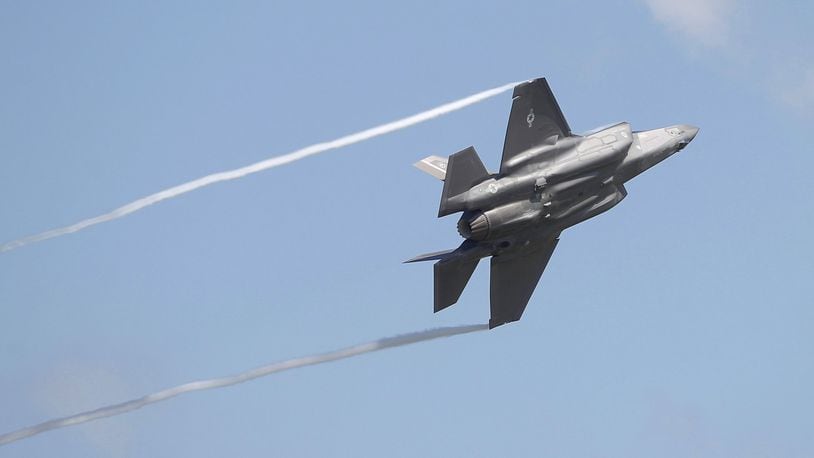But Pentagon officials say only the Navy’s carrier-based version — the F-35C with its fold-able wings and sturdier landing gear — is under scrutiny against the Super Hornet.
In January, Secretary of Defense James Mattis ordered a review of the program to determine ways to “significantly reduce” costs and separately ordered a comparison between the Super Hornet and the F-35C only.
The Air Force flies the F-35A, a stealth fighter jet, and the Marine Corps the F-35B, a vertical take-off and landing variant. Both have been plagued with technical delays and cost overruns, but each service branch has declared both versions combat ready. The Navy has targeted that F-35 milestone for 2019. Program officials say the cost of the aircraft has fallen and projected to reach below $100 million per copy for the Air Force’s version in the years ahead.
The Air Force plans to purchase 1,763 copies of the fighter. The Pentagon has planned to buy more than 2,443 F-35s in all, including 260 for the Navy. The Marine Corps would buy 420, including 80 based on the Navy’s version.
The Navy flies the Super Hornet, but the Air Force does not.
Loren B. Thompson, a senior defense analyst with the Virginia-based Lexington Institute and a defense industry consultant, said the Super Hornet was designed with features unique to carrier-based flying that the Air Force doesn’t need, and the jet doesn’t meet the Marine Corps call for a plane that takes off and lands vertically to stay close to troops in the field.
“When you combine its unique naval features with the lack of an integrated stealth design to evade enemy radar, the Super Hornet isn’t a good fit for Air Force or Marine Corps plans. F-35 is operational with both of those services, and they have expressed no desire to buy a different aircraft,” he said in an email.
Thompson doesn’t predict the F-35 won’t have a key future role in the Navy. Future carrier squadrons will likely be a mixture of F/A-18s Super Hornets and the F-35C through at least 2040.
He added “as threats grow in the future, the Navy will need carrier-based F-35s to penetrate hostile air space on the opening days of war — before enemy radars have been knocked out.”
The Navy has had plans to buy more Super Hornets for years, said Richard Aboulafia, a senior defense analyst with the Virginia-based Teal Group.
“The Navy has been prioritizing Super Hornets and is looking at a new Super Hornet way before Trump said anything,” he said. “… It will be very interesting, and I don’t think Trump is willing to do this because it would require a real change rather than a fake one, but if you wanted a real change to really shake things up he would have the Air Force look at taking more existing Air Force planes, like F-15s or F-16s.”
The Air Force Life Cycle Management Center headquartered at Wright-Patterson Air Force Base has an F-35 Division that develops technology for the fifth-generation fighter.
About the Author
